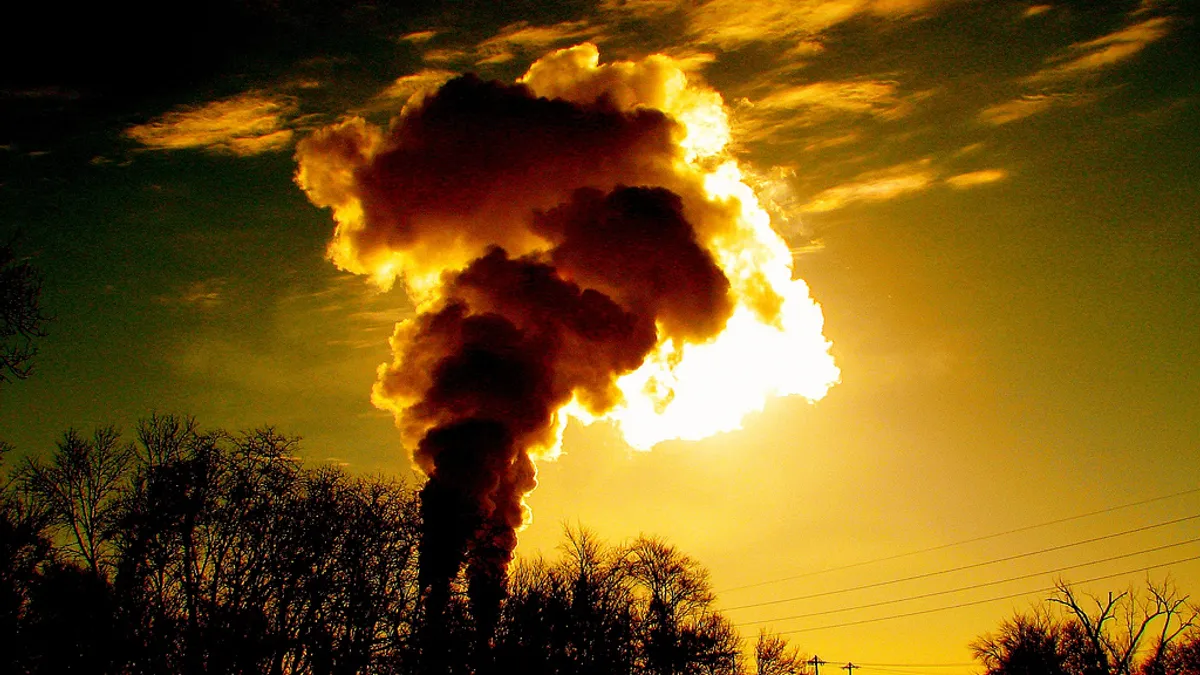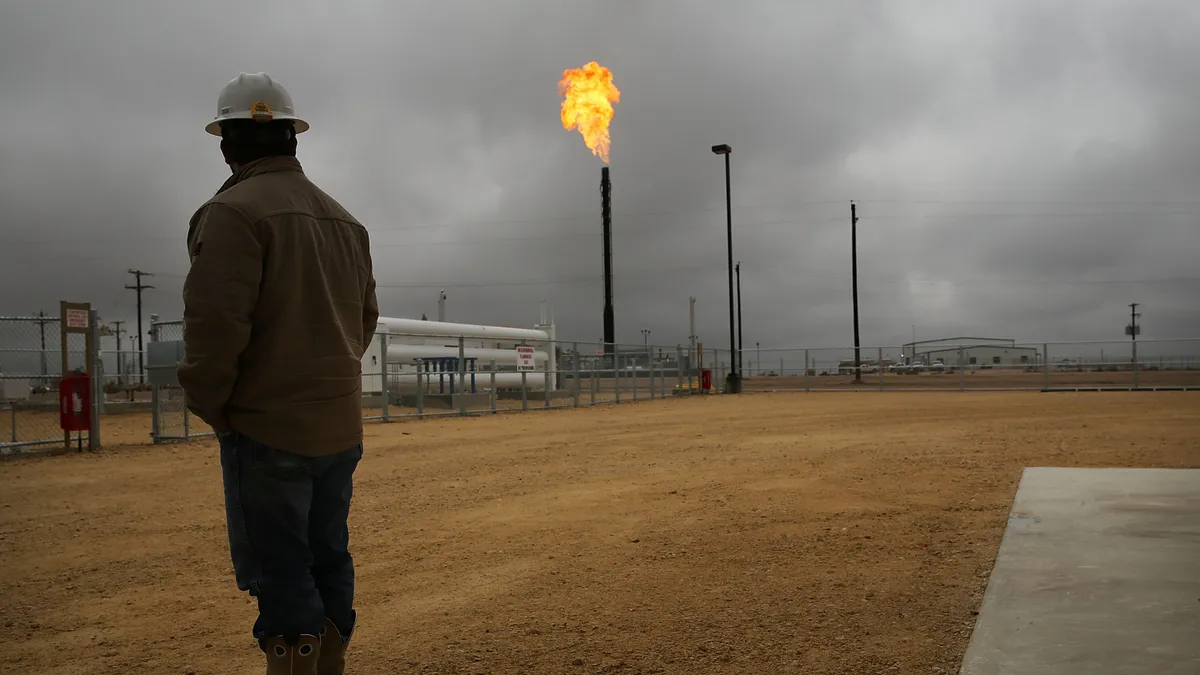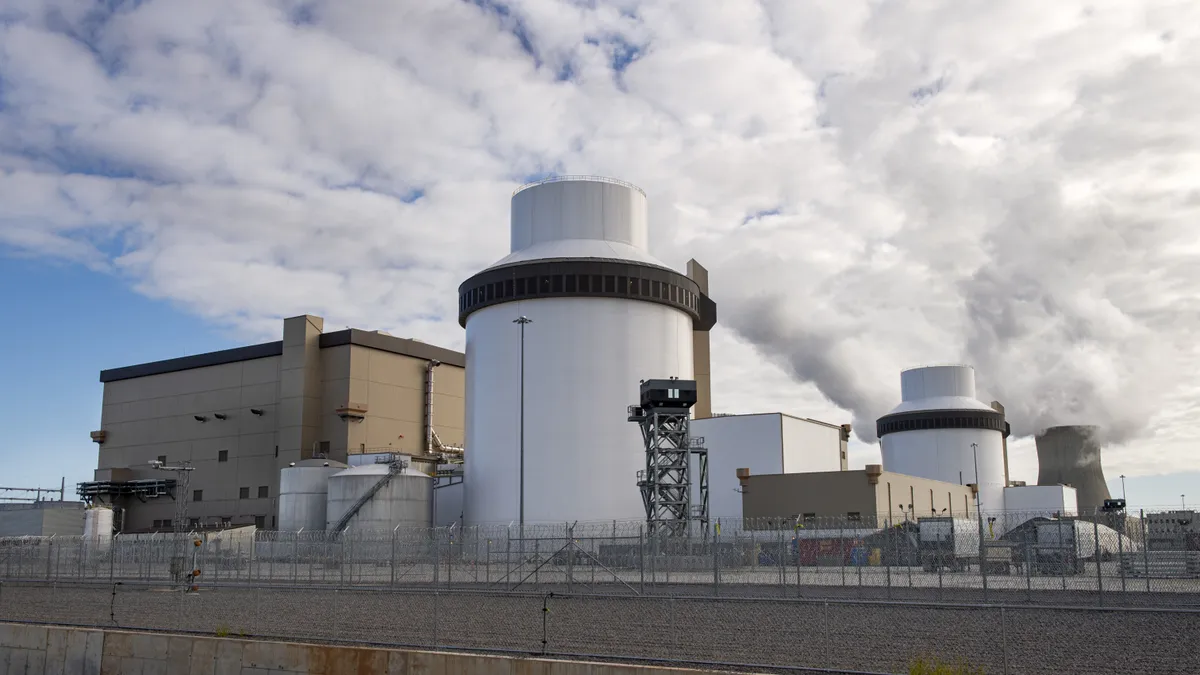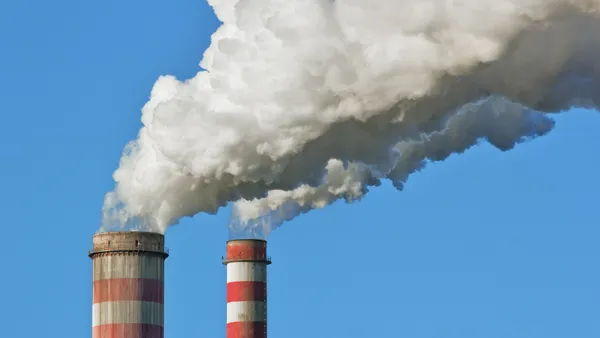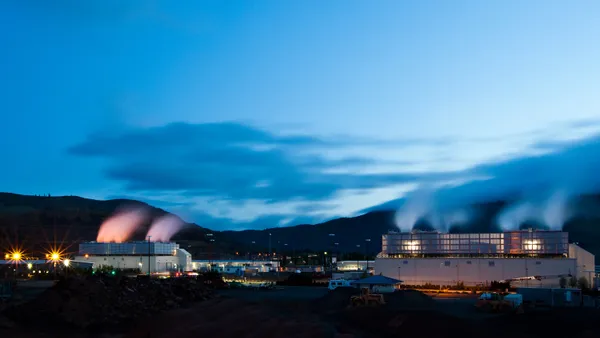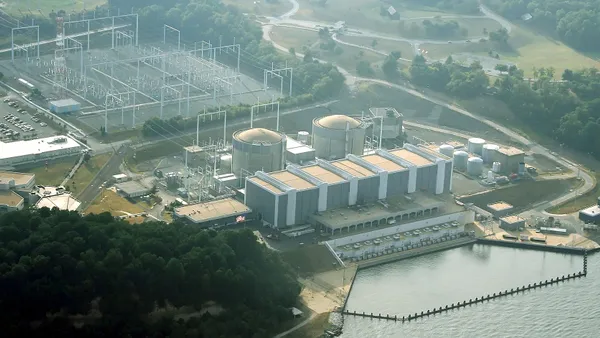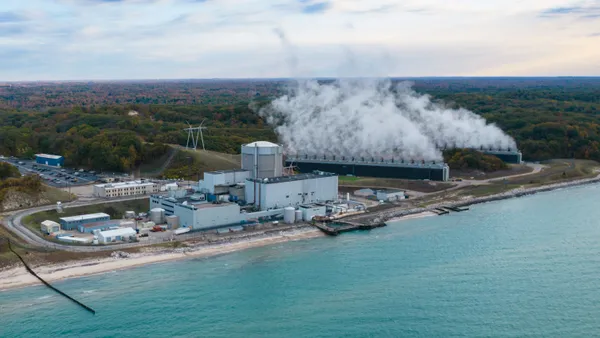Dive Brief:
- Kansas City Power & Light announced last week that the Missouri-based utility will retire six coal-fired generating units at its Montrose, Lake Road and Sibley Stations, by the end of 2019.
- The bulk of the 900 MW of planned retirements will take place next year. The utility said plant age played a factor—most of the units are at least 50 years old.
- Other factors include declining wholesale power prices, fueled by cheap natural gas, environmental compliance and stagnant demand. The improving economics of wind generation is also playing a role, officials said.
Dive Insight:
There are a wide range of factors behind KCP&L's decision to retire almost a gigawatt of coal capacity, but as the industry has witnessed lately, the biggest one is cheap natural gas and the improving economics of renewables.
Terry Bassham, president and CEO KCP&L and its parent company, Great Plains Energy, said in a statement that retiring the units “is the most cost-effective way to meet our customers’ energy needs as we continue to move to a more sustainable energy future.”
Two years ago, the utility announced it was considering retiring the coal units or converting them to an alternative fuel source at these plants. One unit at the Lake Road Station was converted to natural gas in 2016, but the utility said that since then several "emerging industry trends and changing circumstances" led the company to favor retirement.
"The value of energy produced by these plants has dropped in recent years, primarily driven by new wind generation and lower natural gas price," the utility said. KCP&L also noted that it does not anticipate needing new capacity for many years, while its reserve requirements have also declined.
Wind generation in the Southwest Power Pool increased 30% year-over-year in 2016, according to the utility, and last year, KCP&L also announced plans to purchase an additional 500 MW of power from two new facilities at Osborn and Rock Creek. This year, the utility plans to increase its renewable portfolio to more than 1,450 MW, making up more than 20% of its capacity needs.
“In addition to our substantial renewable energy portfolio, KCP&L has the largest per capita energy efficiency portfolio of any investor-owned utility in the region,” said Bassham. “By retiring these plants, KCP&L is taking another step forward in our plan to provide cleaner, cost effective energy to our customers.”
Last month, state regulators unanimously approved a $32.5 million rate increase for the utility that is expected to raise average bills by about $4/month. KCP&L plants to use increased revenues to upgrade its infrastructure, add regional transmission lines, and comply with environmental and cybersecurity mandates.



